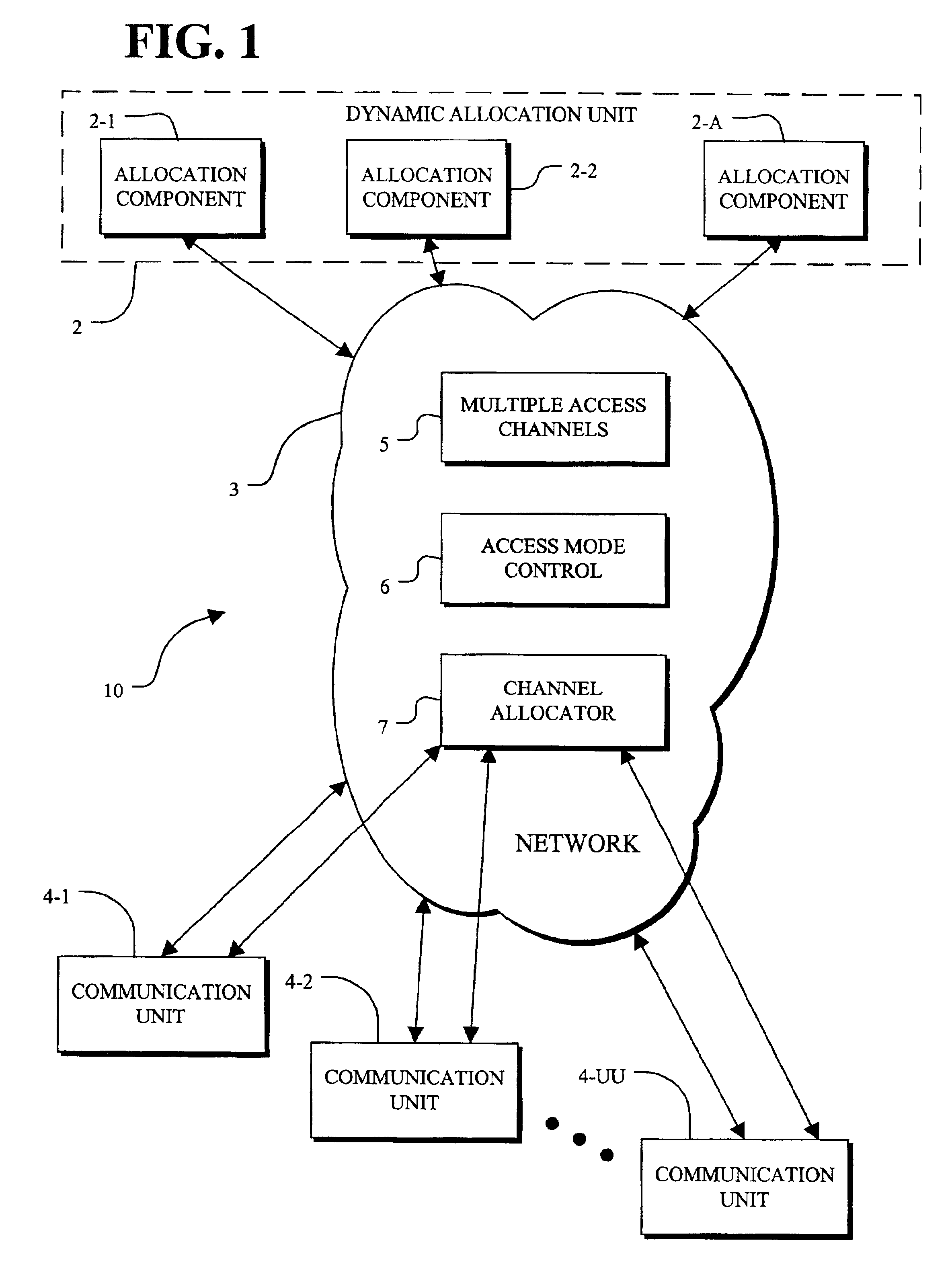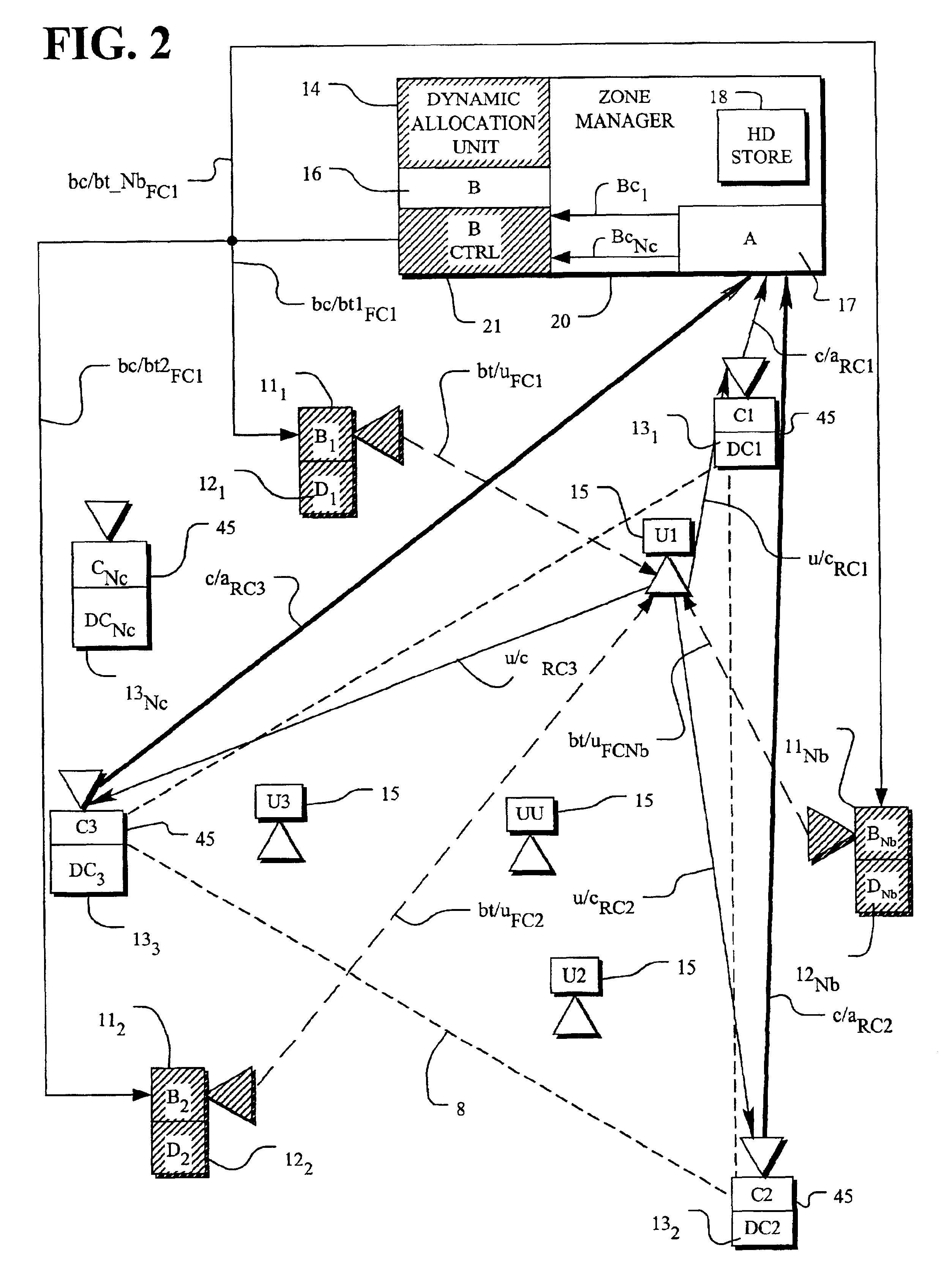Dynamic channel allocation in multiple-access communication systems
a communication system and dynamic channel technology, applied in multiplex communication, data switching networks, assess restrictions, etc., can solve the problems of macro-diversity processing, adverse impact on backhaul channel bandwidth, and optimization of downlinks, so as to maximize network spectrum efficiency
- Summary
- Abstract
- Description
- Claims
- Application Information
AI Technical Summary
Benefits of technology
Problems solved by technology
Method used
Image
Examples
Embodiment Construction
[0051]Multiple Access System With Dynamic Channel Allocation—FIG. 1.
[0052]In FIG. 1, a communication system 10 is shown for interconnecting a plurality of communication units (CU) 4, including communication units 4-1, 4-2, . . . , 4-C, over a communication network 3. The network 3 has multiple access channels 5 that are capable of operation in different access modes under the control of access mode control 6. As a function of the access mode and the availability of channels, channel assignments for the communication units 4 are made by a channel allocator 7. In order to make use of unused times for otherwise assigned time slots, two or more communication units are assigned at different times to the same time slot and the usage is switched among the sharing communication units. With such sharing, what would be unused cavities for one particular communication unit are used by another communication unit. The operation of the channel allocator is under control of the dynamic allocation ...
PUM
 Login to View More
Login to View More Abstract
Description
Claims
Application Information
 Login to View More
Login to View More - R&D
- Intellectual Property
- Life Sciences
- Materials
- Tech Scout
- Unparalleled Data Quality
- Higher Quality Content
- 60% Fewer Hallucinations
Browse by: Latest US Patents, China's latest patents, Technical Efficacy Thesaurus, Application Domain, Technology Topic, Popular Technical Reports.
© 2025 PatSnap. All rights reserved.Legal|Privacy policy|Modern Slavery Act Transparency Statement|Sitemap|About US| Contact US: help@patsnap.com



